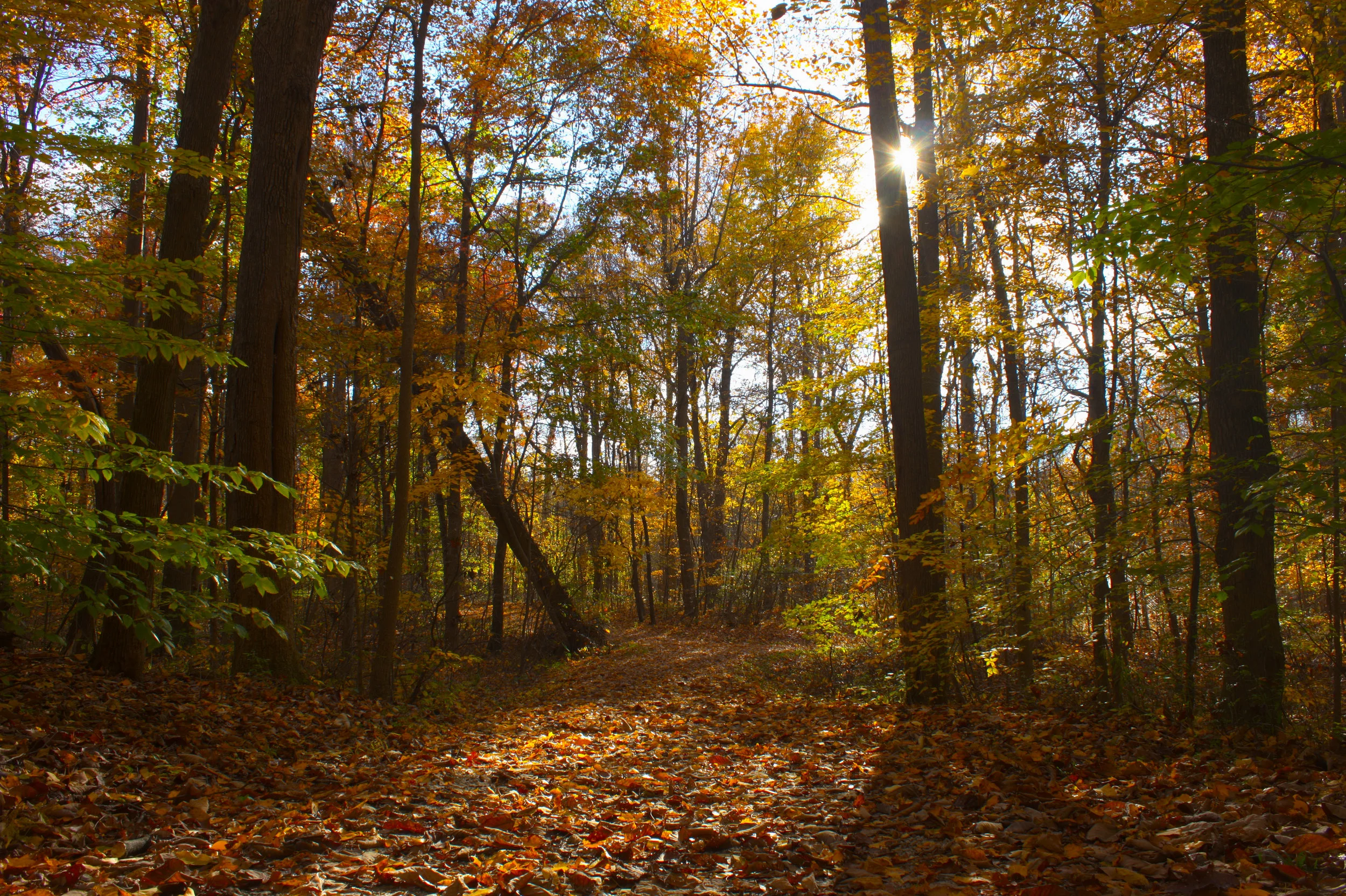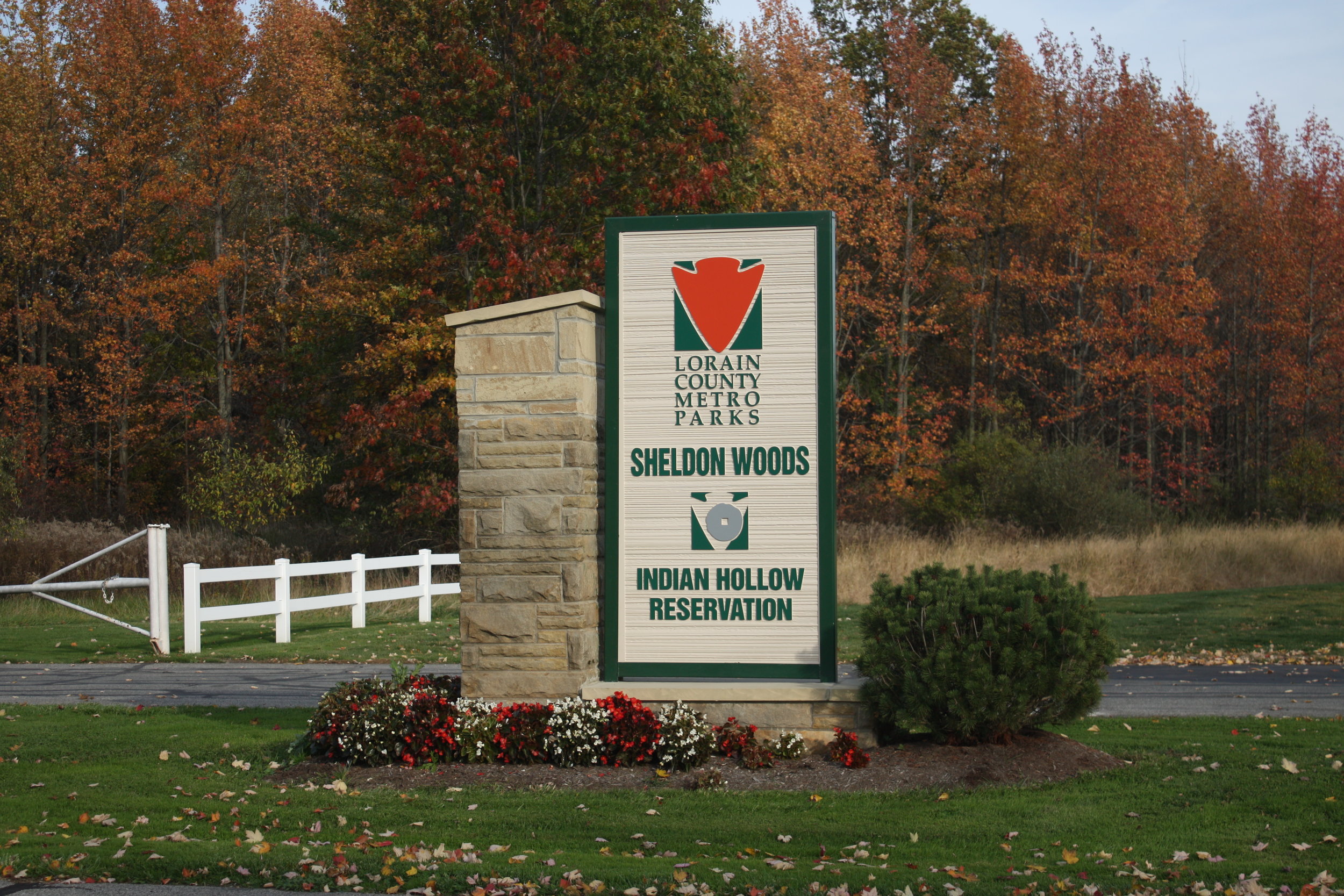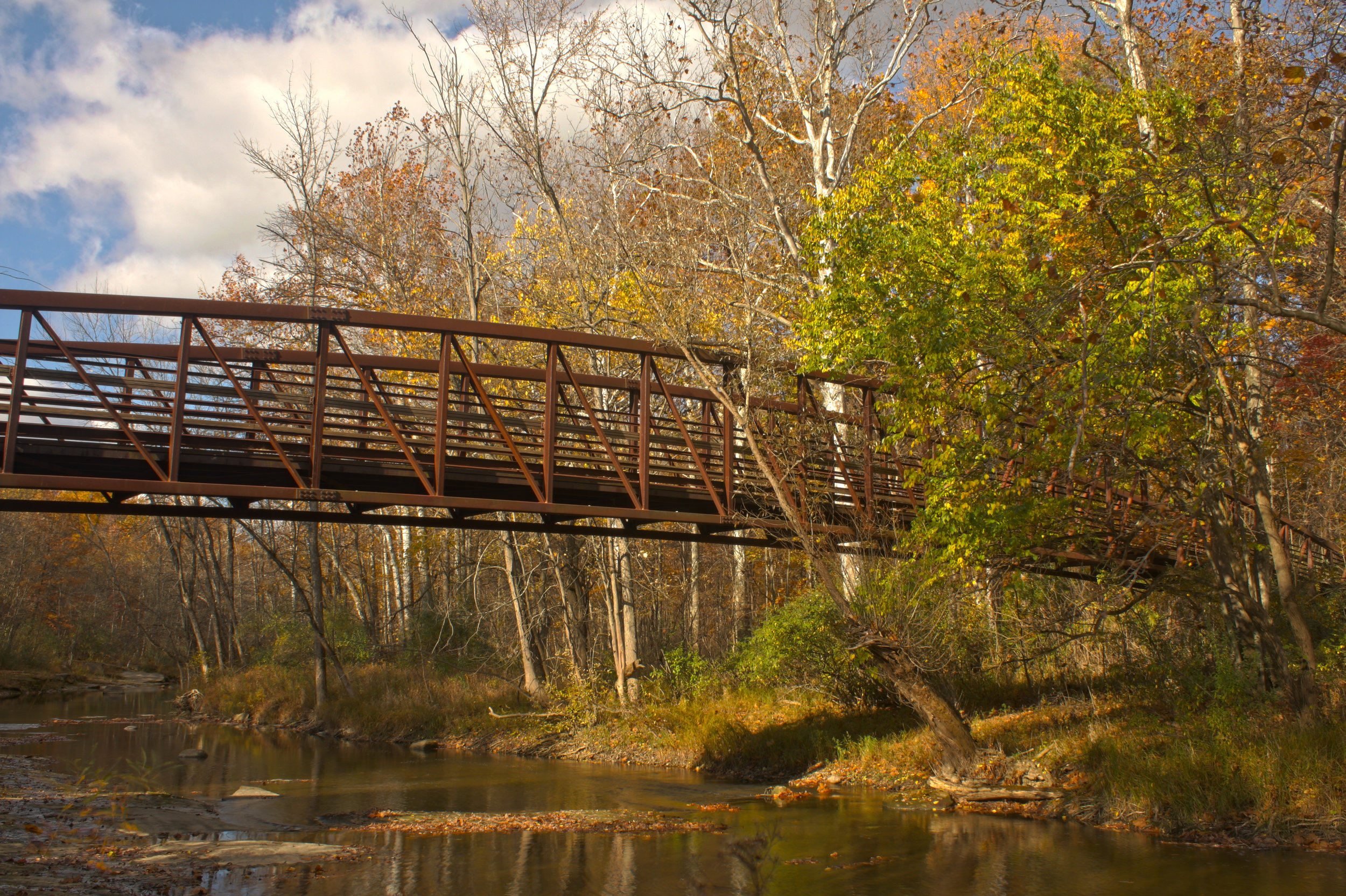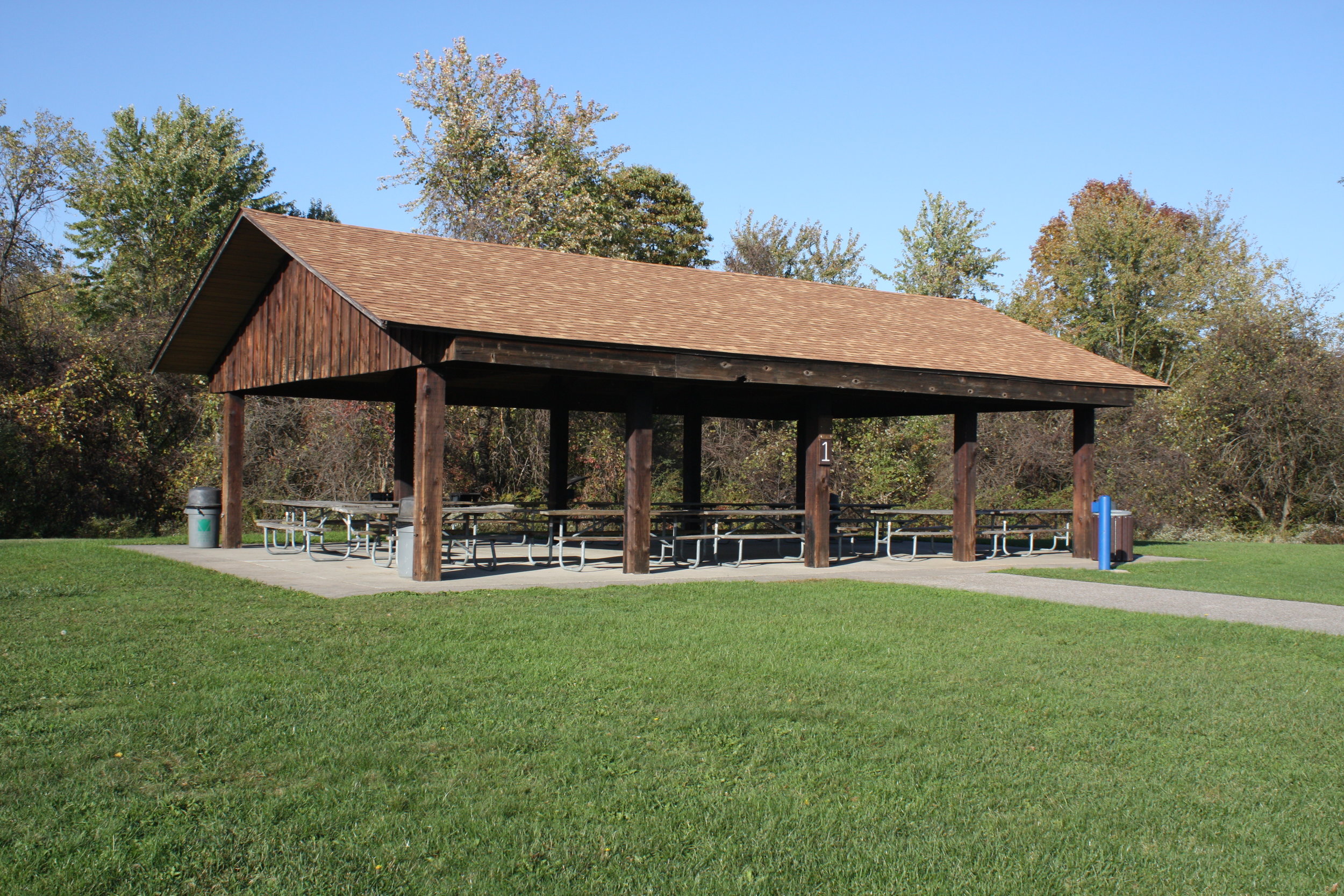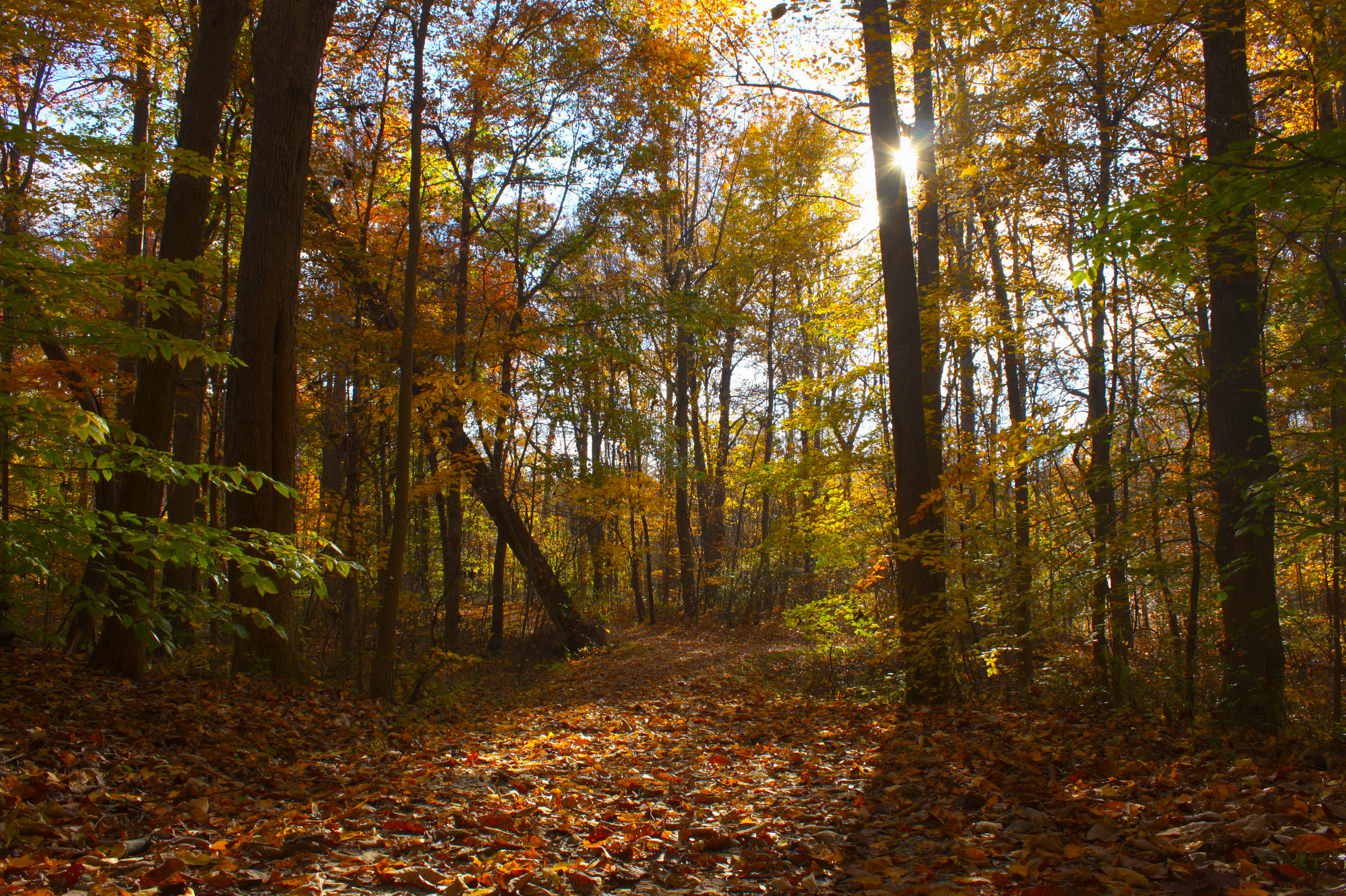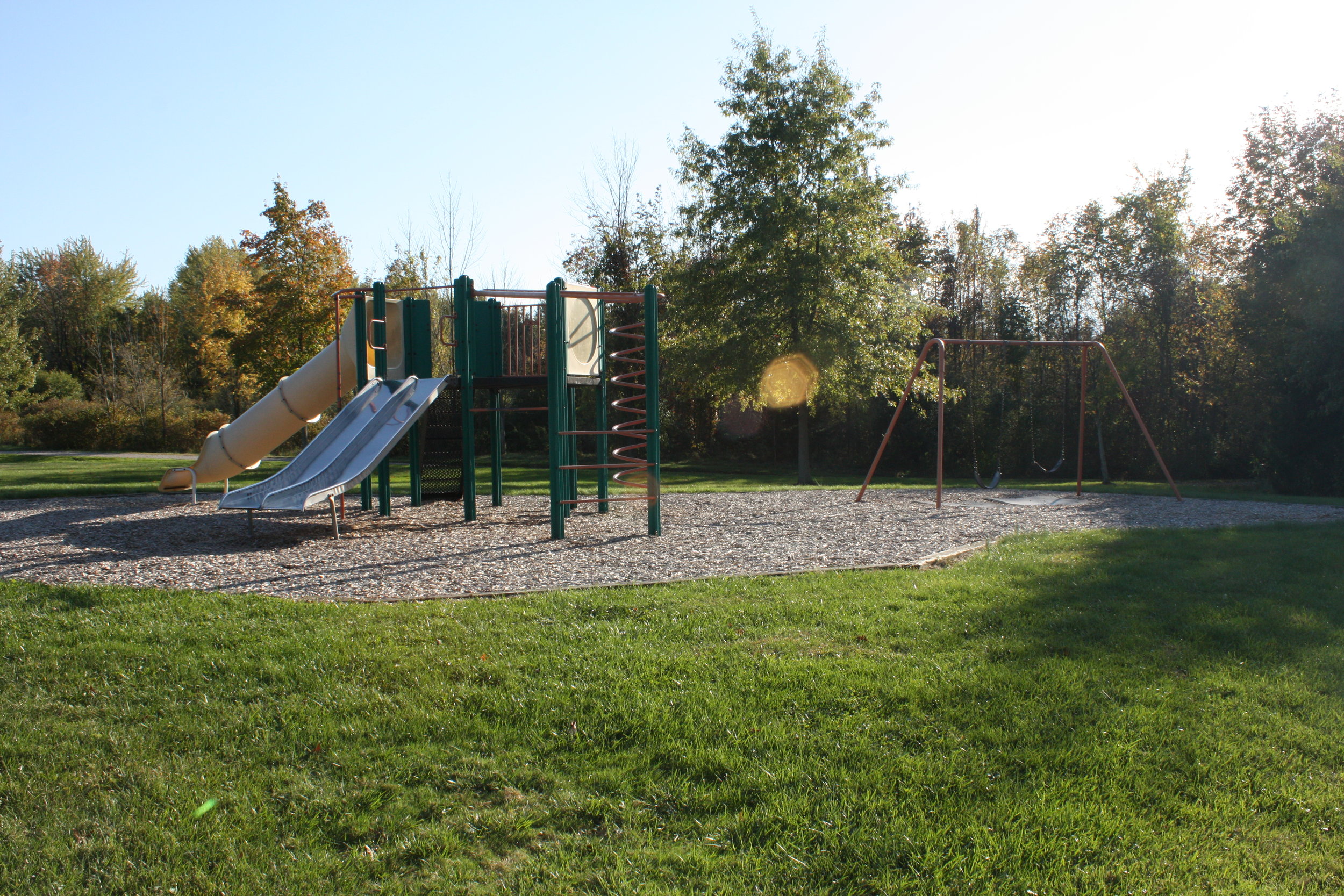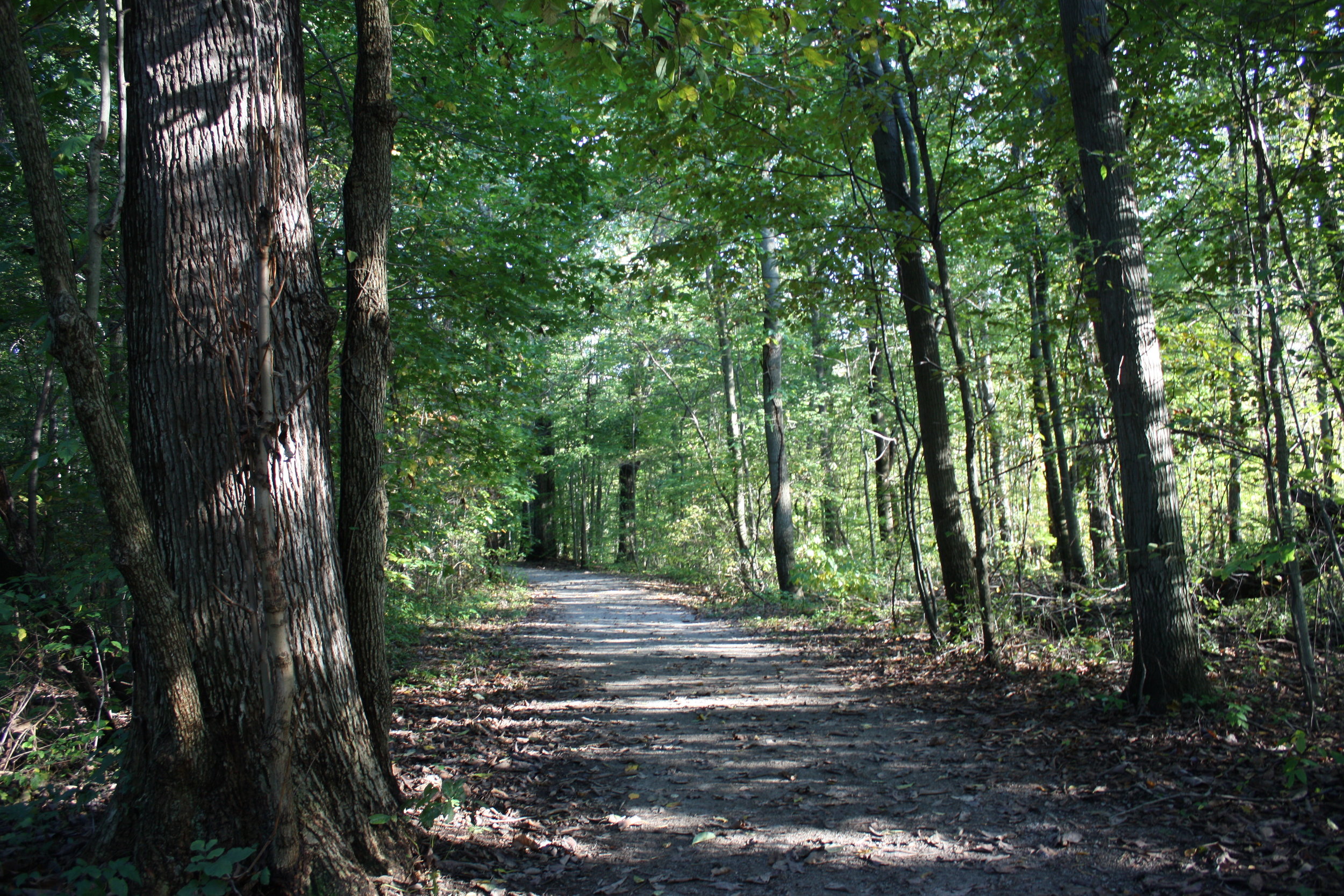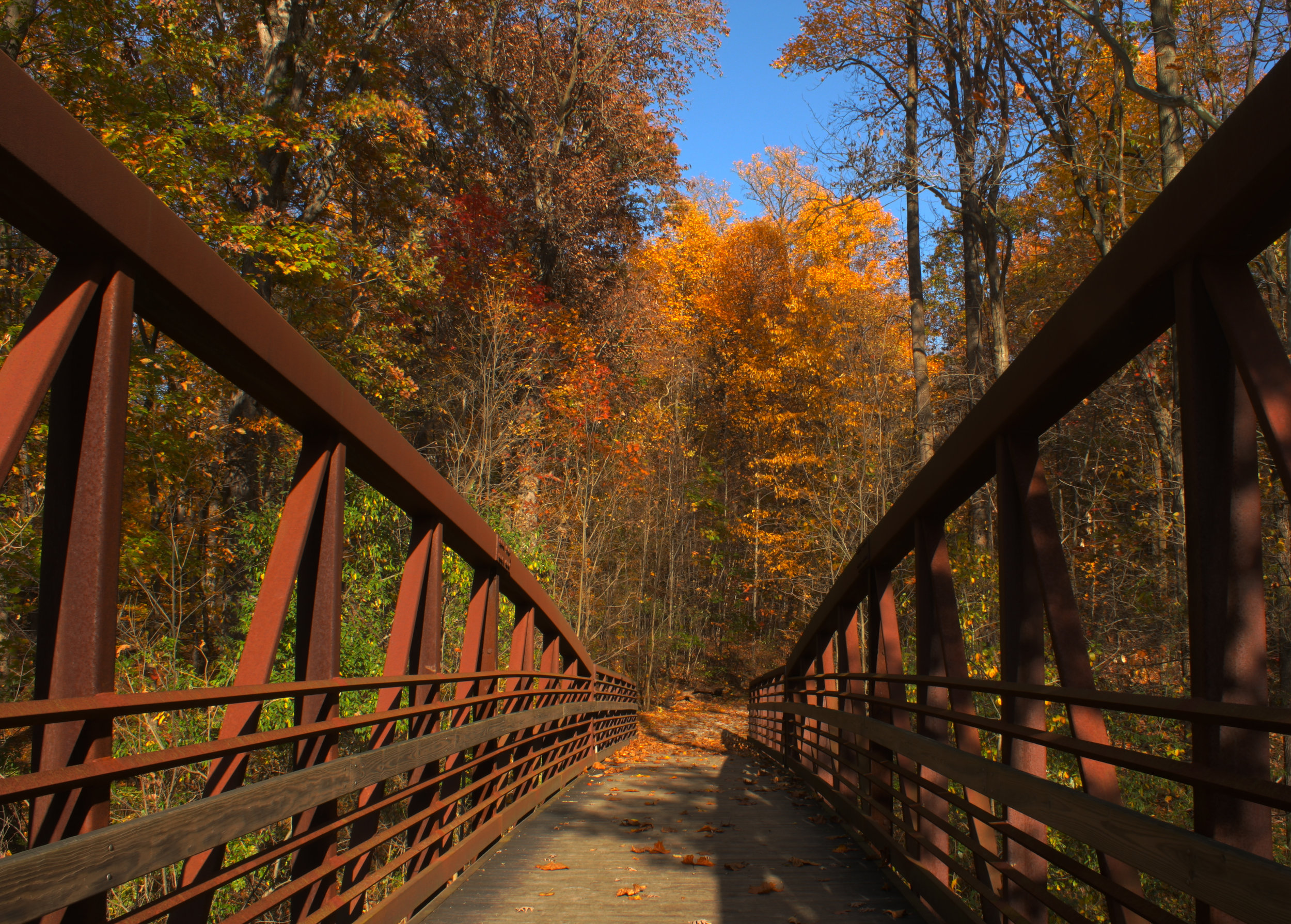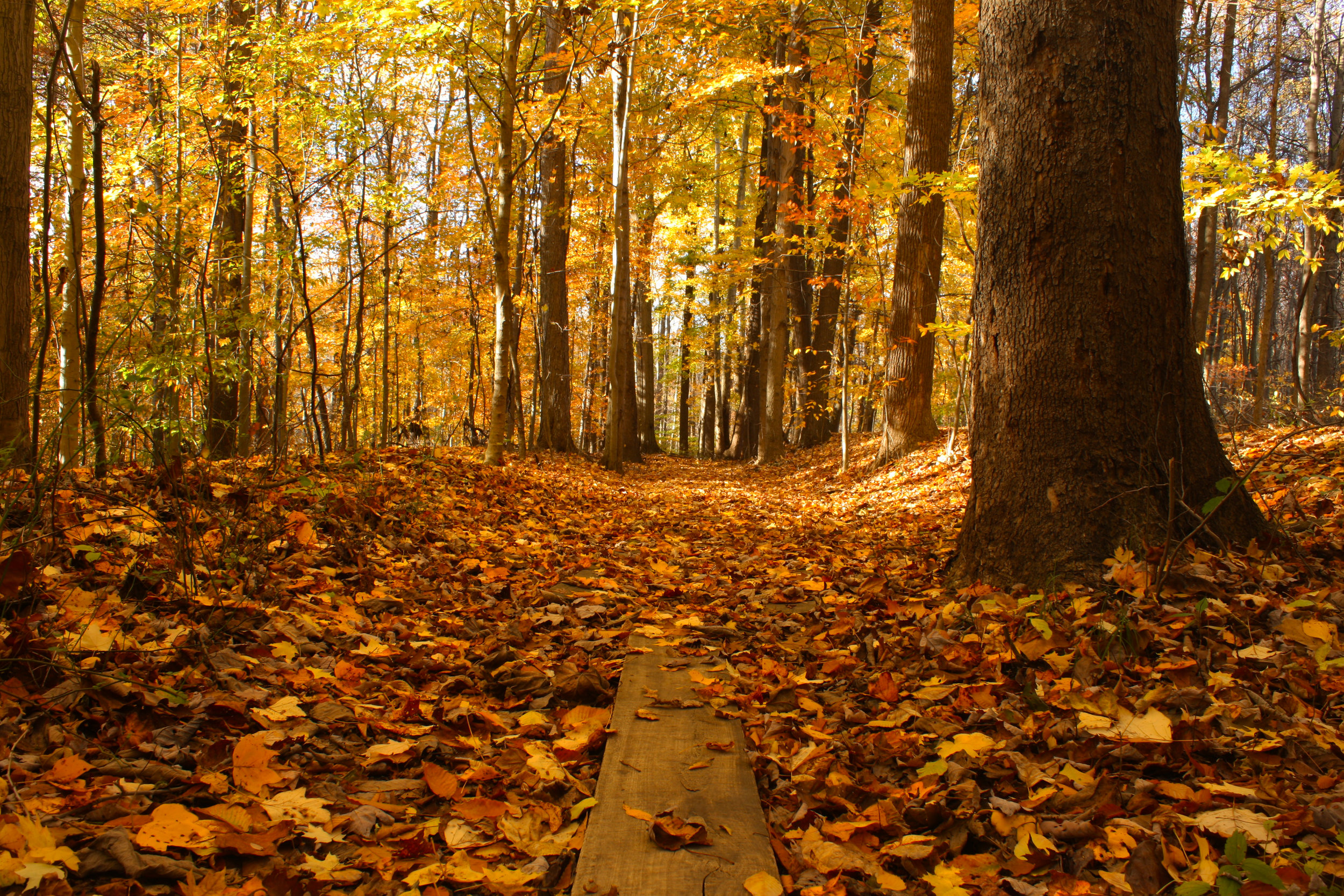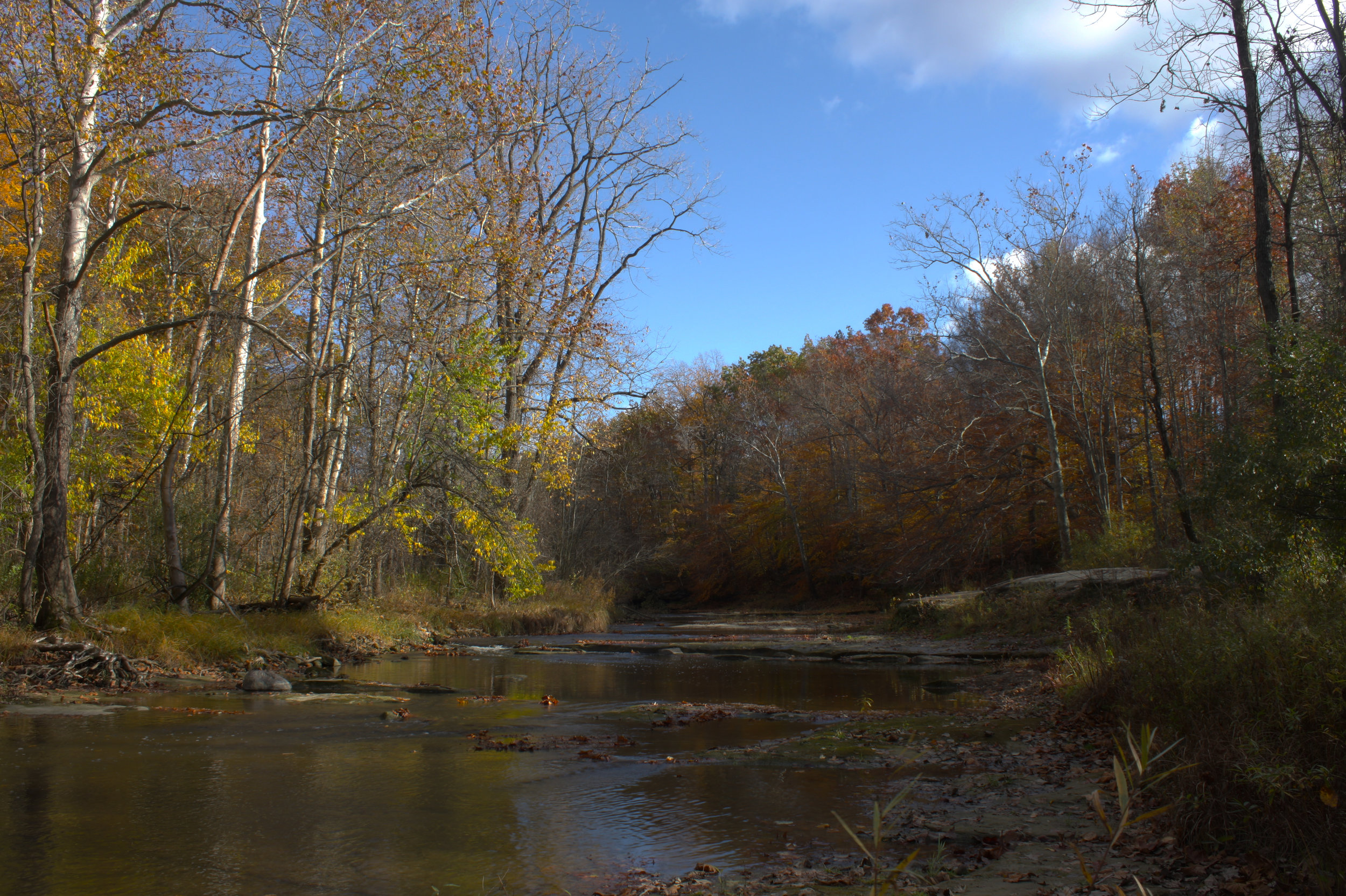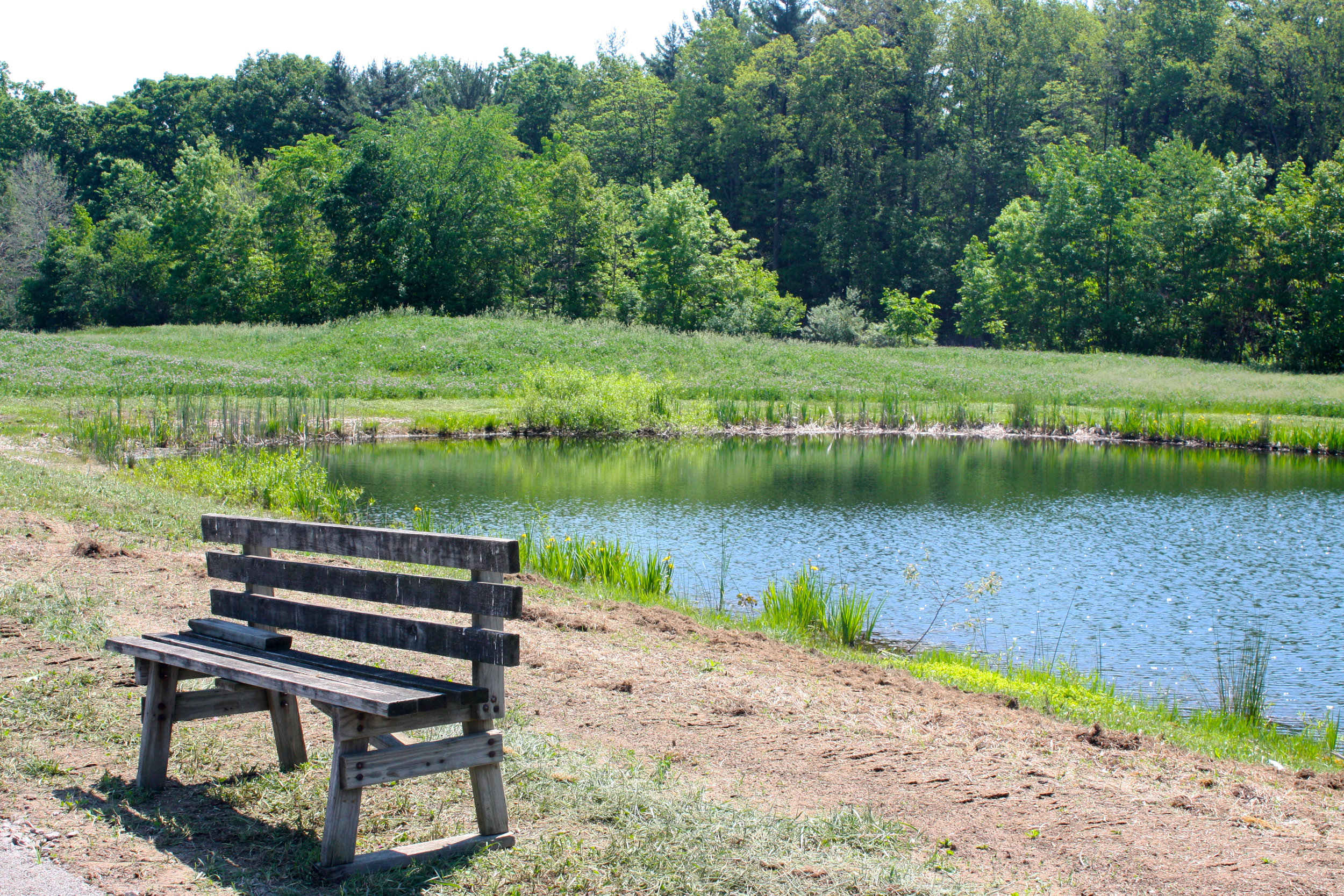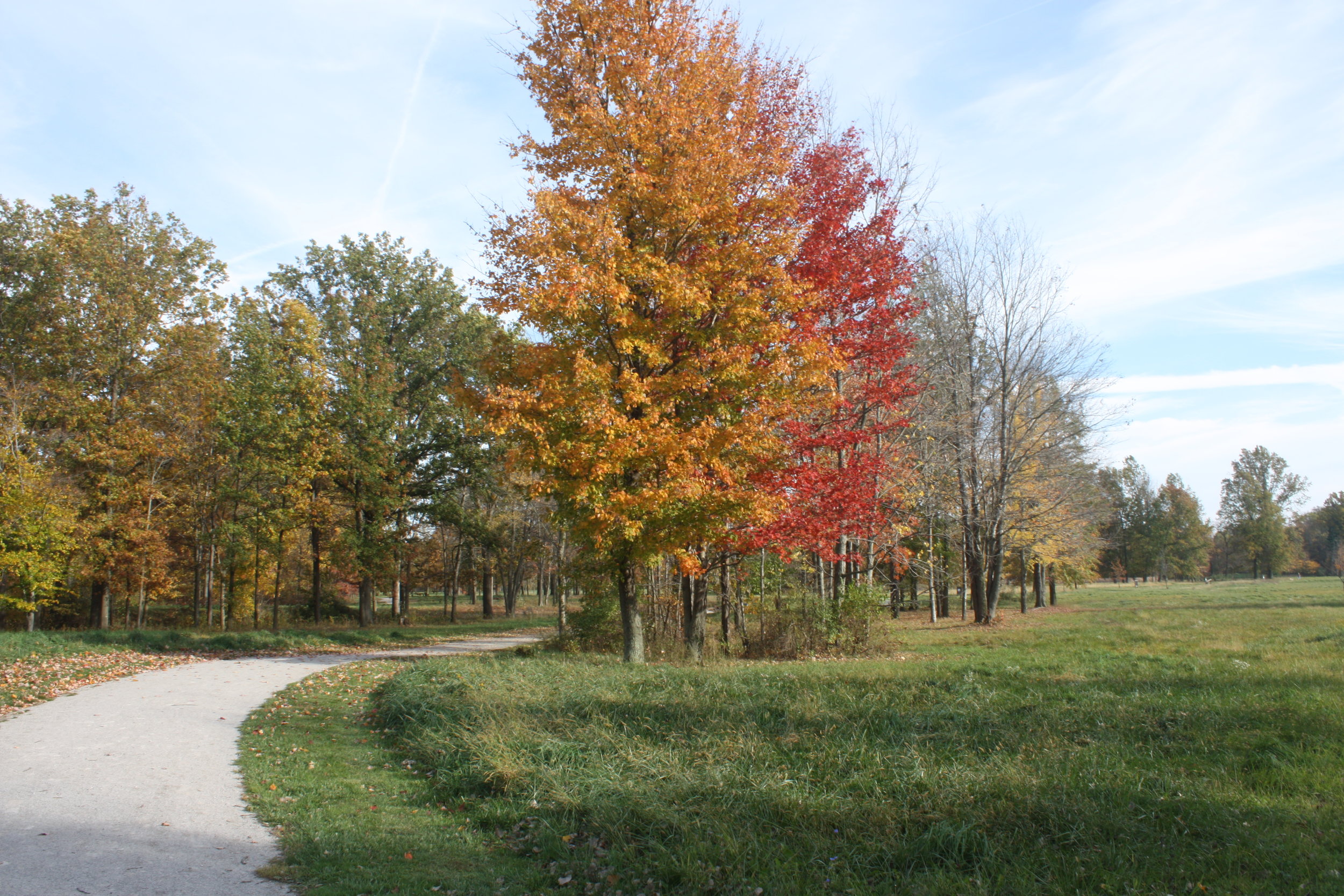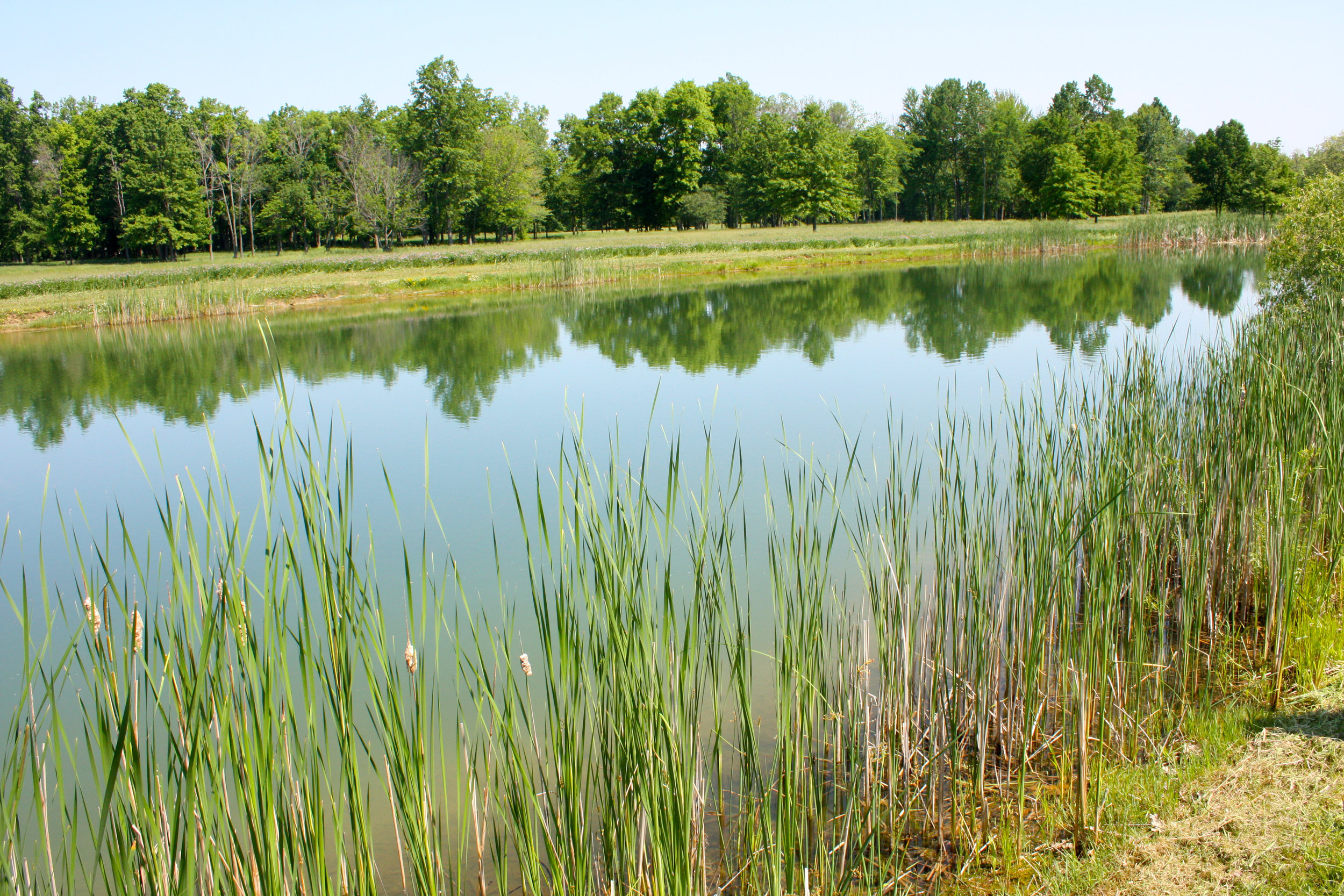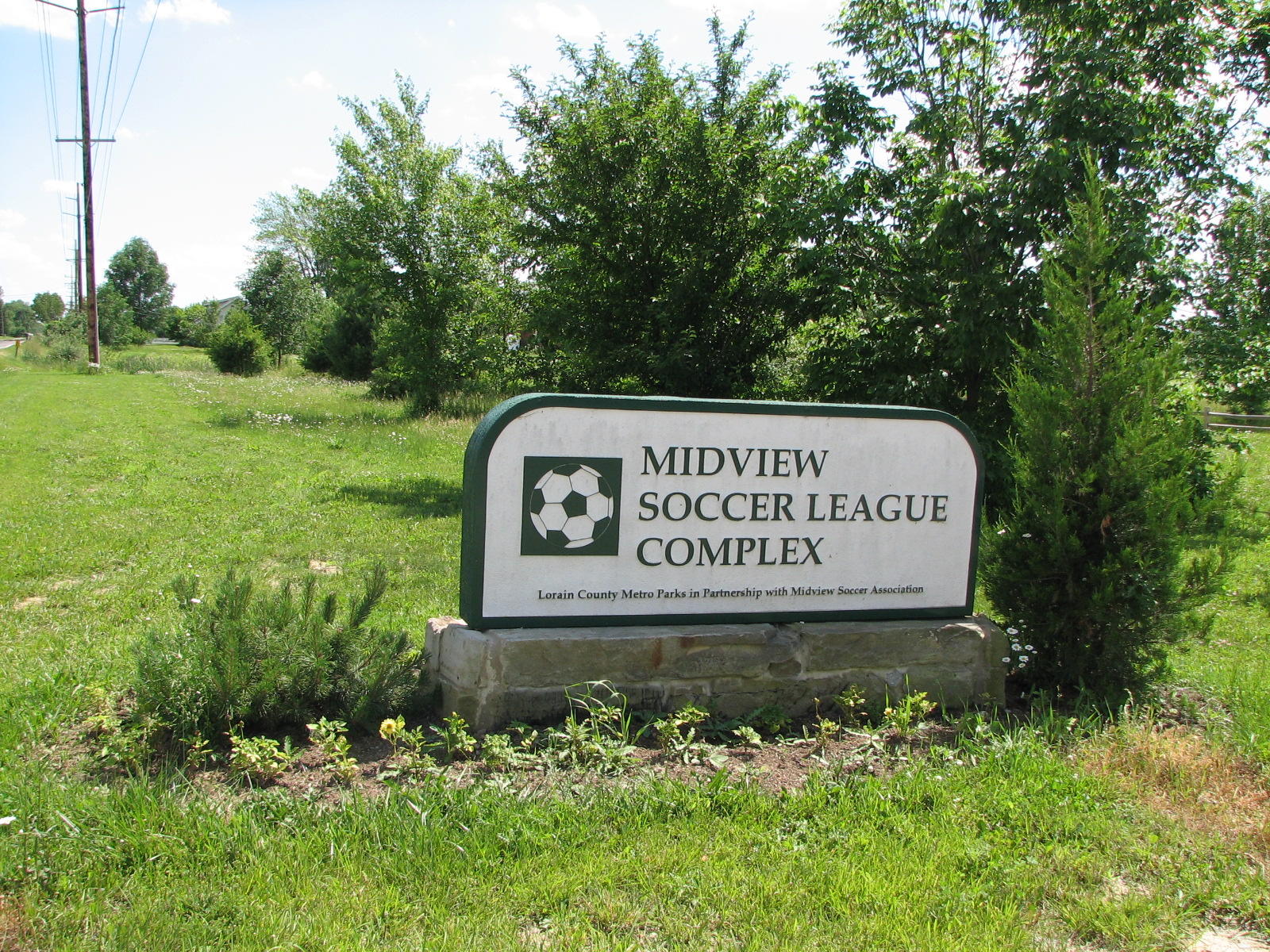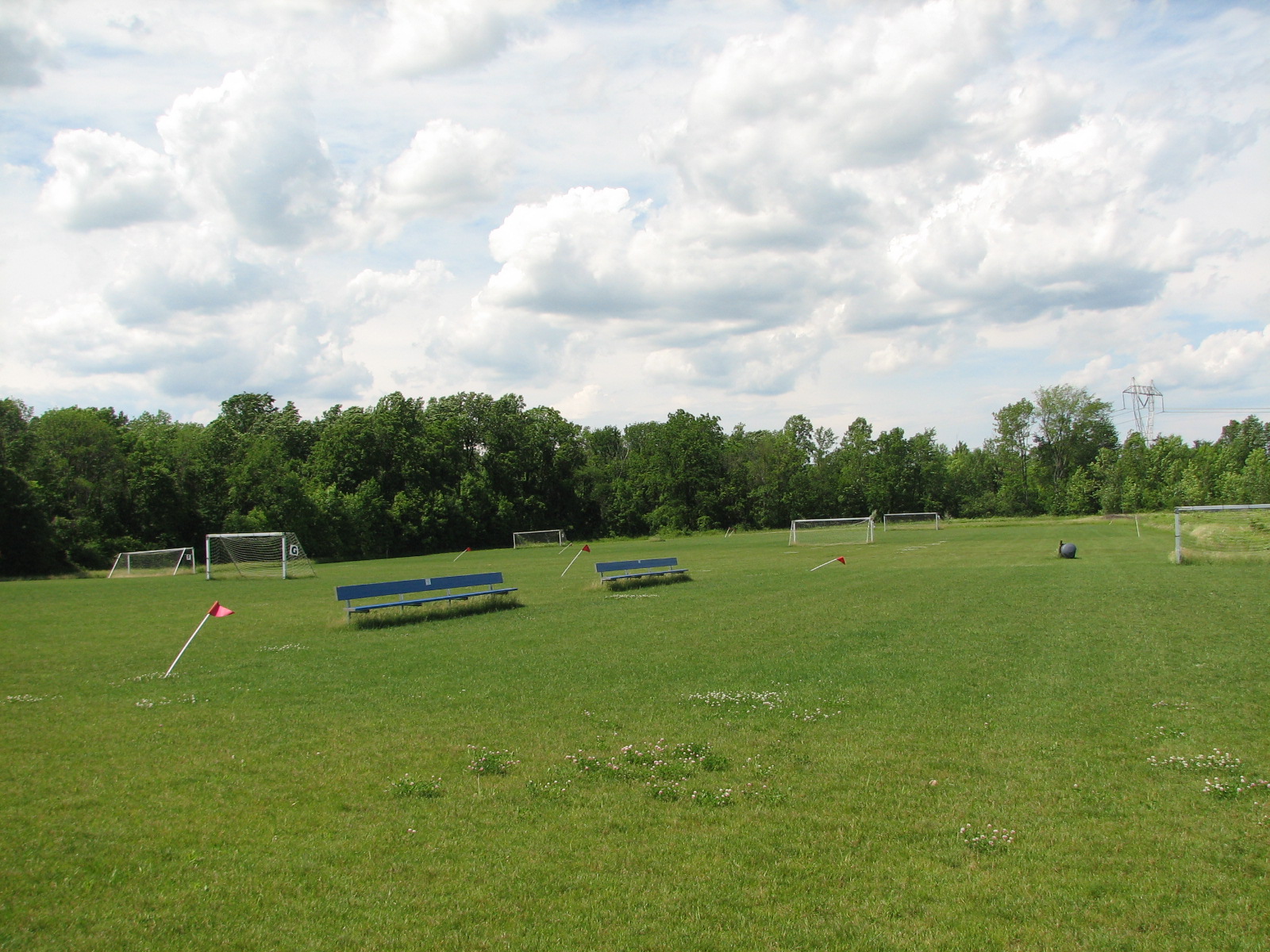Hours: 8 a.m.-Sunset (?), Daily
With four reservable picnic shelters, mountain bike trails, two playgrounds, soccer complex, a field to fly your RC airplanes and over five miles of trails including a fitness trail, we're sure you'll find it a great place to visit, walk, picnic, bike or just relax and listen to the trees.
HIGHLIGHTS
Mountain Bikes, Trails & Soccer
Although Indian Hollow is actually made up of five separate tracts of land that will one day be linked by trails, Sheldon Woods, Royal Oaks and the Midview Soccer Complex are the only parts presently open to the public. Sheldon Woods is made up of 180 acres of mostly wooded land bisected by the eastern branch of the Black River. The facilities are all on the western side of the river—two picnic shelters, a playground, and restroom facility.
Sheldon Woods
Walking, running and mountain biking are probably the most popular activities at Indian Hollow. Sheldon Woods is almost two miles in length, you can pick it up either at the trail head by the restroom facilities or at Route 57 entrance in Grafton Village. The Connector Trail and part of the Wayne Shipman Memorial Trail includes a storybook trail with Grafton-Midview Public Library periodically changing the story. The storybook trail was an Eagle Scout project completed by Logan Denger. Fishing can also be done in the river at Indian Hollow. Sheldon Woods is unique in the park system because it is the only one where mountain bikes are allowed due to its rugged sandstone base. The mountain bike trails are located on the east side of the Black River.
Royal Oaks
The Royal Oaks portion of Indian Hollow is a former golf course turned hiking and fitness trail. The Fitness Trail section is a 0.3 mile loop featuring 15 different workout stations. The crushed limestone trail is a total of 2.5 miles and is a great place to run or walk your dog as it travels through beautifully scenic fields and features 3 catch-and-release fishing ponds. At the beginning of the trail, near the former clubhouse, there is a water fountain which even features a doggy drinking fountain.
Midview Soccer Complex
If soccer is more your sport, the Midview Soccer Complex is the place to be. The Midview Soccer Complex is located on Chamberlain Road in Grafton Township and was made possible by a partnership with the Midview Soccer League. With 15 soccer fields, a concession stand, restrooms, two reservable shelters and a playground, the complex is a busy place during soccer season. Visit the Midview Soccer League website for more information.
NATURAL HISTORY
A Thoroughly Impacted Environment...
Parts of Sheldon Woods are remarkable in that they have been so thoroughly impacted by man. During the time when the quarry was operational, many parts had been stripped clear of all vegetation, leaving nothing but stone and gravel. Over time, nature has begun to reclaim even the most decimated areas around the quarries themselves. These areas are considered successional, also known as scrub, because they are undergoing the long transition from barren, rocky soil to beech-maple forest.
Other parts of Sheldon Woods have not been so impacted, and already host a healthy beech-maple forest. Bald eagles have been heard and sighted, which favor the large sycamore trees of the more mature woods.
...Rich With Life
In spite of this devastation, Indian Hollow is rich with life of all kinds. Small-mouth bass is a common game fish in the river. The old quarries have developed into a wide variety of wetland habitats as well. While some of the shallower quarries have filled in, others have become deep, steep-sided ponds where fish, water lilies, and cattails now grow. One surprising and unpredictable resident of the deep quarries is the freshwater jellyfish (Carspedadusta sowerbii), and there’s a small, spring-fed stream lined with the fragrant calamus (or sweetflag) near where it falls into the Black River.
A yearly parade of unique plants rise out of Indian Hollow’s sandy soil. The Beech-Maple Trail namesakes - American Beech (fagus grandifolia) and sugar maple (acer saccharum) – form a beautiful example of what was once the common climax forest of the area. But even this great stand seems to somewhat fade in the shadow of the cucumber tree. This large, and fairly unknown, tree is actually a magnolia (Magnolia acuminate) and is not known to grow anywhere else in the Lorain County Metro Parks.
Rounding out the unusual plant life of the Indian Hollow Reservation is the ancient liverwort, the redundant two-flowered cynthia (Krigia virginica), the orchid family member downy rattlesnake-plantain (Goodyera pubescens), the evergreen wintergreen (Gaultheria procumbens), and the delicate wild columbine (Aquilegia canadensis).
HISTORY
Ice, Forest and Grizzly Bears
Some 12,000 years ago, the Indian Hollow Reservation was covered by the continental glacier called the Wisconsin Ice Sheet. This natural bulldozer was one mile thick and gouged out such local features as Lake Erie. The glacier undoubtedly rode high over the ancient sandstone outcrop that was to become Indian Hollow. It probably exposed the fine sedimentary rock even more. Water erosion took place at an unprecedented rate as the Ice Sheet melted. A shallow channel through the sandstone continued to deepen, and the Black River’s East Branch was born.
After the Wisconsin Ice Sheet receded, the land here resembled the more northern habitats of the taiga and boreal forests. Wild and wonderful animals roamed through this area including the now extinct American mastodon, giant beaver, and the bear-sized ground sloth. Joining these animals were birds and mammals now more common north of here, including musk ox, grizzly bear, and gray wolf.
Over several thousand years the glacier retreated further north and the climate moderated. The beech-maple forest soon became the dominant habitat – and still is today.
The First Pioneers
While Native Americans lived in the area for several thousand years (see the French Creek Reservation page) James Smith was the first European to venture into Lorain County in 1758. His diary documents the Black River quite well, but it’s not clear if he visited the land that would become Indian Hollow. Smith was no doubt followed by French trappers and other adventurous pioneers. The first local settlement was established in 1817 by Jonathan and Grindall Rawson.
The Quarries
In the 1850's J. W. Hart opened his stone quarry--now part of Sheldon Woods at the Indian Hollow Reservation. The Grafton Stone Company purchased the operation, turning it into one of the best equipped quarries in the country. In 1879 it was purchased by the famous Cleveland Quarries Company. For some 60 years overall the site provided sandstone for buildings, bridges, culverts, and later, for grindstones. Some of the latest quarried grindstones never made it out of site and can still be found stacked and scattered in the northwestern end of Sheldon Woods.
Julius and Eleanor Sheldon farmed the land west of the Black River until 1963 at which time they entered into agreement with the Metro Parks. The Sheldons sold approximately 43 acres to the Park District and donated another 35 acres. In 1975, Indian Hollow Reservation officially opened to the public.
Hours
8 a.m.-Sunset
Daily
*Midview Soccer Complex is closed during the winter months.
Contact
(440) 458-5121 (Administrative Office)
For shelter and room rentals, please contact administrative offices.


